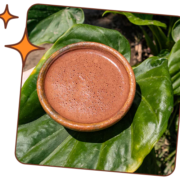UPCOMING EVENTS
Women’s Herbal Wellness Class Series
with Alicia Garza
First two Fridays of the month

January 2nd & 9th
@ 4:00 pm
*** Stick around for Terrie’s Sound Bath afterwards***
*************
Grounded Sound Baths
Fridays January 2nd & 9th
6:00 pm
(Come after Alicia’s Wellness Class)

Connect with Mother Earth as you immerse yourself in the soothing sound of crystal and Tibetan singing bowls and other meditative instruments for a deeply relaxing & healing inward journey. Grounding mats provided.
*************
Return of the Light:
Plant Allies for Stress, Depression, and Fatigue
with Kat Maier

Saturday January 31st, 2026, 10am – 5pm
Heart-Opening Cacao Ceremony

Sunday Morning Tea Ceremonies

with Silvy Franco
Join Silvy for a meditative ceremony to commune with Camelia sinensis. Come for quiet reflection as you sip on several cups of tea following Japanese tradition. Ceremony begins at 9:30 am and goes for an hour. Pre-registration is required.
Suggested Donation: $25




Black Cohosh
/in Herb of the Month /by Ashley DavisMeet Black Cohosh, a native woodland perennial and one of my top ten favorite herbs. You may have heard of this plant as a “menopause herb” and it is a great ally for hormonal transitions, but it has many other virtues including relieving arthritis and rheumatic pain, lower back pain, whiplash, and menstrual cramps!
BOTANICAL NAME: Cimicifuga racemosa, Actaea racemosa
COMMON NAME(S): Black Snake Root, Rattle Root, Squaw Root, Bugbane
FAMILY: Ranunculaceae
PARTS USED: Root and rhizome
DESCRIPTION: Native perennial; non-aggressive, non-invasive. 3-8ft. Leaves thrice-divided; sharply toothed; terminal leaflet 3-lobed, middle lobe largest. Flowers white, in very long spikes; May – Sept. Tufts of stamens are conspicuous
HABITAT/HARVESTING/PROPAGATION: Black Cohosh grows in rich woods. Southern Ontario to Georgia.; West to Arkansas, Missouri and Wisconsin. The roots are unearthed with the rhizome in the Fall after the fruits have ripened. They should be cut lengthwise and dried carefully. Black cohosh is most easily propagated by dividing the rhizomes in spring or fall. Plants can also be started indoors from seed or seed can be directly sown into the ground, but rhizome divisions provide a more uniform plant stand and allow for a faster harvestable root. Black Cohosh is on the endangered species list and is heavily encouraged to propagate!
ENERGETICS AND TASTE: Cool, Sweet, Acrid, Bitter
TISSUE STATE: Wind/Tension, Damp Stagnation
CONSTITUENTS: Triterpene glycosides (actein, cimicifugoside, cimifugine, racemoside, cimiracemosides), isoferulic aice, salicylic acid, volatile oils, tannins (Hoffman)
SOLUBILITY: Water, alcohol (best), glycerine
ACTIONS AND PROPERTIES: Emmenagogue, antispasmodic, anti inflammatory, antirheumatic, alterative, nervine, hypotensive
USES & INDICATIONS: Black Cohosh is a valuable remedy for many systems of the body. A fantastic relaxant and normalizer of the female reproductive system by lowering painful or inducing delayed menstruation, relieves cramping pain during pregnancy or associated with menstruation. It is very effective against rheumatic pain including that of rheumatoid arthritis, osteoarthritis, muscle pain, neurological pain, sciatica, and neuralgia. It is antispasmoic and anti-inflammatory, which make a wonderful combination for rheumatic complaints. It is also alterative, meaning that it supports the channels of elimination and can keep the body’s detoxification mechanisms working optimally. Alteratives used to be called “blood purifiers” because they can keep the blood from becoming too thick or congested.
Black Cohosh helps to ease both physical and mental changes associated with menopause and perimenopause such as hot flashes, headaches, vertigo, irritability, sleep disturbances and depressive moods. The phytoestrogens that black cohosh contains act as estrogen modulators and can be helpful for both estrogen deficiency and excess. Black Cohosh has also been successfully administered in women younger than 40 for treatment of hormonal deficits associated with ovariectomy and hysterectomy (3).
Black Cohosh may lower blood pressure and enhance circulation. It relaxes the smooth muscles of the uterus, digestive tract and blood vessels. It also relaxes It helps to improve dark, gloomy depression and relieves dark, twisted emotional congestion (2). It increases the flow and circulation of Cerebrospinal fluid (CSF). That combined with its antispasmodic effect on the muscles makes black cohosh a specific remedy for whiplash.
Five main uses:
CONTRAINDICATIONS: Pregnancy and lactation, use cautiously. In large doses, it can cause headaches, vomiting, and dizziness. Reports of black cohosh toxicity are due to adulteration of black cohosh with bugbane and other look-alikes. There is also bad information on the internet that warns against using phytoestrogenic herbs like black cohosh in cases of estrogen-dependent cancers because they can increase their growth. This is not true. It has been well-established for decades that phytoestrogens work as both estrogen agonists and antagonists and have a modulating effect on estrogen receptors. In fact, phytoestrogens can help to block the binding of the stronger estrogens like estradiol or xenoestrogens and be very helpful as part of a treatment protocol for breast cancer and other estrogen-dependent cancers.
PREPARATION AND DOSAGE:
Decoction : 1 tsp : 8 fl oz water, decoct 20 minutes, steep 40 minutes. 2-4 oz, 3x a day
Tincture : Fresh root (1:2 80% alcohol), Dried root (1:5 80% alcohol), 1 mL 3x a day
(Fresh root is far superior to dried root)
Glycerite : Dried root (1:5) 0.5-1 mL 3x a day
Capsule : 250-500 mg, 2-3x a day
HOMEOPATHIC/FLOWER ESSENCE: The Homeopathic remedy has an effect on cerebrospinal, muscular system, uterus and ovaries. Indicated in pains associated with rheumatism, uterine cramps and migraine. It helps in treating menstrual disorders accompanied with severe pain in the ovarian region. It is also useful in relieving soreness of the muscles and limbs and helps in reducing involuntary jerking.
The flower essence : Knowing and trusting in one’s inner strength and resources. Helps to promote the honesty and courage to deal with and heal past experiences of abuse and oppression. Releasing entanglements. Bright strong sense of self-emerging.
ETHNOBOTANY/HISTORY/FOLKLORE/
The American Indians have given us ten times as many female remedies as any other culture. Black cohosh was used for menstrual problems and as a parturient in the late stages of labor. The name “cohosh” seems to come from the Algonquin word associated with pregnancy. Rafinesque introduced it to medical literature and it was adopted by the early physio-medical and eclectic physicians. Dr. C.J. Hemple gave it a proving in 1856 and it was adopted into homeopathy.(5) Black Snake Root refers to its past use in North America to treat snake bites, including that of the rattlesnake. Also known as bugbane (in Latin cimicifuga means “to chase insects away”) (4 )
COMBINATIONS:
Black Cohosh, Chaste Tree, Sage, Licorice and Motherwort for relieving hot flashes and night sweats (1)
Black Cohosh and Night Blooming Cereus for “doom and gloom depression”(Our great Eclectics)
Yucca root, Devil’s claw, Black Cohosh root, Prickly Ash Bark, Ginger root, Licorice Root for Good General Arthritis Formula (4)
REFERENCES:
*** This article is for educational purposes only. These statements have not been reviewed by the FDA and this information is not intended to treat, cure or prevent any disease. ***